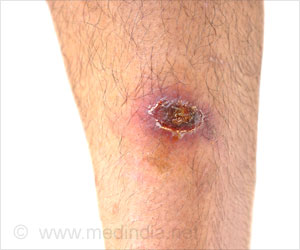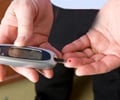Designer worm spit from a Thai liver parasite could be a solution to non-healing wounds in diabetic patients.
- Diabetic patients often complain of non-healing wounds that could make their limbs amputated.
- Scientists have found a new molecule from designer worm spit of a Thai liver parasite to treat non-healing wounds.
- The molecule called granulin has been found to possess wound healing property.
TOP INSIGHT
A new molecule called granulin from the designer worm spit could be a solution to the non-healing wounds in diabetic patients.
Scientists are now trying to produce a version of the granulin molecule on a large scale so that it could be made available for laboratory tests and other clinical trials.
The Discovery of Granulin To Heal Wounds
The granulin molecule belongs to a family of protein growth factors that are involved in cell proliferation.
Dr. Michael Smout, said, "It's produced by a parasitic liver fluke, Opisthorchis viverrini, which originally came to our attention because it causes a liver cancer that kills 26,000 people each year in Thailand."
Dr. Smout said, "We realized the molecule, discovered in worm spit, could offer a solution for non-healing wounds, which are a problem for diabetics, smokers and the elderly."
To produce granulin molecule in the required quantity for large-scale testing, the research team tried to incorporate different techniques.
The scientists first applied recombinant DNA technique that could effectively insert the granulin into the bacteria that aimed in producing reliable copies of the molecule.
Unfortunately, the granulin molecule couldn’t perform well when introduced into the E.coli bacteria. Therefore, recombinant techniques couldn’t be used to produce a testable supply, said Professor Norelle Daly.
She also added that it is essential to find a new way to synthesize only a part of the molecule that could build an own version of the designer worm spit.
The scientists worked to find out the critical part of the granulin molecule that is required for wound healing. They also investigated ways to produce the active parts of the molecule.
The Key to Wound Healing Activity
The complex shape of the granulin molecule was revealed using Nuclear Magnetic Resonance (NMR) Spectroscopy.
The granulin molecule was made up of a string of amino acids that are bent into a twisted 3D shape which includes hairpin bends.
Dr. Smout said, that in biology the shape and fold would vary the function of the molecule. And getting the fold right could be like the difference between throwing a well-folded paper plane and tossing a crumpled ball of paper.
After testing the different segments, the research team concluded that hairpin bends were the key to the wound healing activity.
Professor Daly said that the hairpin bends were held in the twisted 3D shape by disulphide bonds, Surprisingly, introducing an extra non-native bond could produce peptides and hold the right shape to promote healing.
The granulin peptides have shown great promise in tests; cell proliferation in human cells that are grown in lab plates could also demonstrate potent wound healing in mice.
The research team can now produce perfectly folded, wound healing properties. Further research may progress towards further testing and clinical trials.
Professor Alex Loukas, said, "We have plenty of work to do before clinical trials, but we're confident we have a very strong contender for what could one day be a cream that a diabetic could apply at home, avoiding a lengthy hospital stay and possible amputation."
Non-Healing Wounds in Diabetics
In diabetic patients, wounds heal very slowly. It is estimated that around 18 million Americans have diabetes and around 15% of them may have a foot ulcer.
Around one in seven diabetics in Australia will have a non-healing wound at some point of their life and might have to undergo amputations.
About AU$3.7 billion per year are involved in long hospital stays for treating chronic wounds.
Formulations like creams with granulin molecule would be a great step to treat chronic wounds and will also help to the reduce the burden on health care costs.
References:
- Paramjit S. Bansal, Michael J. Smout, David Wilson, Claudia Cobos Caceres, Mohadeseh Dastpeyman, Javier Sotillo, Julia Seifert, Paul J. Brindley, Alex Loukas, Norelle L. Daly. Development of a Potent Wound Healing Agent Based on the Liver Fluke Granulin Structural Fold. Journal of Medicinal Chemistry, 2017; 60 (10): 4258 DOI: 10.1021/acs.jmedchem.7b00047
- How Diabetes Affects Wound Healing - (http://www.woundcarecenters.org/article/living-with-wounds/how-diabetes-affects-wound-healing)
 MEDINDIA
MEDINDIA





 Email
Email








